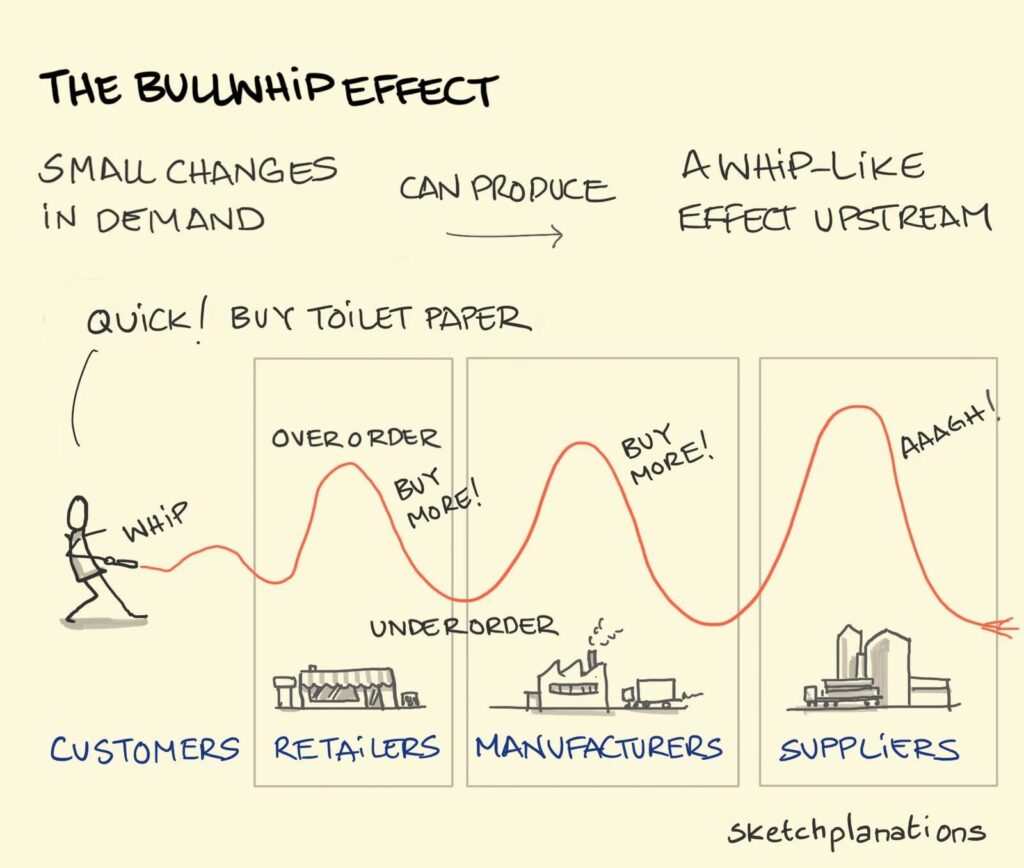Sometimes you can make things worse by just “trying to do your best.” Planning and forecasting is supposed to be the way to solve production, supply, and storage problems but it is not always reliable. Variations in demand are being magnified more than ever. Even the best forecasters can’t react quick enough to accurately adjust inventory supply. This brings us to our main point of introducing the Bullwhip Effect.
According to the Chartered Institute of Procurement and Supply, “The bullwhip effect (also known as the Forrester effect) is defined as the demand distortion that travels upstream in the supply chain from the retailer through to the wholesaler and manufacturer due to the variance of orders which may be larger than that of sales.” This in turn causes too many or not enough supplies as needed to be purchased at each level of the chain. These products often end as lost, dead stock, on backorder, or need to have their prices cut to avoid total loss.

Image courtesy of SketchPlanations
So what causes this effect in supply chains?
- Issues with lead time
- Lack of communication
- Too many discounts or promotions
Luckily, the bullwhip effect in the supply chain can be reduced through simply shared knowledge with suppliers and customers. The technology we have today allows for faster response times and less overreactions when variations occur. Powered by our proprietary inventory management software, Supply Stream reduces shortages, ensures more timely shipments from manufacturers to their customers, recovers lost orders, and eliminates operational expenses. By integrating Supply Stream into your production operation, you can rest assured that you’ll never run out of raw material again.For more information go to www.neverrunout.com.
